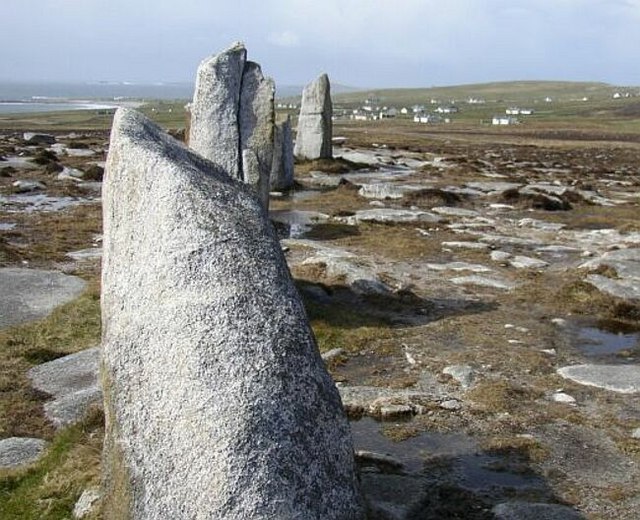The Watch Come Inside Me 3focus of this new image share from NASA — a photo composite featuring imagery captured by the Hubble Space Telescope and the Karl G. Jansky Very Large Array in New Mexico — is Hercules A.
The distant galaxy, also known as 3C 348, is the bright spot right in the middle of the below image. Those long, gorgeous trails of red are plasma jets that span roughly 1.5 million light-years of distance. They're invisible to the naked eye, but we see them here in beautiful shades of red, pink, and purple thanks to the VLA.
As for the cause of these enormous plasma jets, look no further than the massive black hole that sits at the center of 3C 348.
 Credit: NASA and the Space Telescope Science Institute (STScI)
Credit: NASA and the Space Telescope Science Institute (STScI) It's an elliptical galaxy that's roughly 1,000 times larger than our own Milky Way. Same goes for the black hole the galaxy formed around; it's also about 1,000 times larger than the one at the center of our Milky Way, at around 2.5 billion solar mass. (Many galaxies are believed to have formed around supermassive black holes.)
"Emitting nearly a billion times more power in radio wavelengths than our Sun, the galaxy is one of the brightest extragalactic radio sources in the entire sky," the VLA's website says of 3C 348.
The plasma jets move through space at close to the speed of light. Hubble's site also points out that the bulbous, "ring-like structures" at the end of each jet suggests the distant galaxy's black hole has sent them hurtling outwards into space more than once.
SEE ALSO: Trippy nebula captured in brilliant new Hubble imageAlways remember when you're looking at photos like these that they're actually snapshots from the distant past. The Hubble team captured this particular image in 2012, but 3C 348 is an estimated 2 billion light-years away. That means, roughly speaking, a photo taken today is capturing a scene from 2 billion years ago.
It's important to maintain perspective when we're peering at pictures of space. This single scene that you're probably looking at on a smartphone or tablet covers an inconceivable stretch of distance. And even though the photo itself was snapped almost a decade ago, the scene that's pictured played out around 2 billion years ago, at a time when Earth was still bouncing back from a mass extinction event that significantly predates our history as a species.
UPDATE: April 18, 2021, 10:10 a.m. EDT An earlier version of this story incorrectly attributed this image entirely to the Hubble Space Telescope. In fact it also features imagery from the Karl G. Jansky Very Large Array in New Mexico. Likewise, a brief quote that appears above and was previously attributed to the Hubble website is actually from the website of the National Radio Astronomy Observatory website. The VLA is part of the NRAO's operations.
(Editor: {typename type="name"/})
 UGREEN Nexode 25000mAh 200W power bank drops to $79.99 at Amazon
UGREEN Nexode 25000mAh 200W power bank drops to $79.99 at Amazon
 On the Far Side of Belmullet by Rebecca Bengal
On the Far Side of Belmullet by Rebecca Bengal
 Notes on Nevada: Trans Literature and the Early Internet by Imogen Binnie
Notes on Nevada: Trans Literature and the Early Internet by Imogen Binnie
 Alexis Pauline Gumbs, Nonfiction by Alexis Pauline Gumbs
Alexis Pauline Gumbs, Nonfiction by Alexis Pauline Gumbs
 Emmett Rensin ,May 2, 2017 Operation Mensc
...[Details]
Emmett Rensin ,May 2, 2017 Operation Mensc
...[Details]
Best Microsoft Surface deal: Get the Microsoft Surface Laptop Studio 2 for $600 off
 SAVE 25%: Get the Microsoft Surface Laptop Studio 2 for just $1,799.97 at Amazon, marked down from t
...[Details]
SAVE 25%: Get the Microsoft Surface Laptop Studio 2 for just $1,799.97 at Amazon, marked down from t
...[Details]
Redux: The Marketing of Obsession by The Paris Review
 Redux: The Marketing of ObsessionBy The Paris ReviewMay 3, 2022ReduxEvery week, the editors of The P
...[Details]
Redux: The Marketing of ObsessionBy The Paris ReviewMay 3, 2022ReduxEvery week, the editors of The P
...[Details]
20% off pink Hydroflask bottles, tumblers, and mugs
 SAVE AT LEAST 20%: Shop the Hydroflask Think Pink flash sale to get a minimum 20% discount on select
...[Details]
SAVE AT LEAST 20%: Shop the Hydroflask Think Pink flash sale to get a minimum 20% discount on select
...[Details]
Trump's science adviser pick is actually a good scientist
 President Donald Trump may soon have a widely-respected scientist briefing him on the extreme weathe
...[Details]
President Donald Trump may soon have a widely-respected scientist briefing him on the extreme weathe
...[Details]
The guilty pleasure of North Sea TikTok and its dystopian oil influencers
 I’ve never been particularly intothe sea (is anyone into the sea?). As hard as it might be to
...[Details]
I’ve never been particularly intothe sea (is anyone into the sea?). As hard as it might be to
...[Details]
Gmail: Google is reportedly adding an AI voice feature
 Google's AI-assisted email drafting feature might soon come with voice support. "Help Me Write" is a
...[Details]
Google's AI-assisted email drafting feature might soon come with voice support. "Help Me Write" is a
...[Details]
How 'True Detective: Night Country' pulled off its most WTF moment
 My biggest fears used to be pretty basic: sharks, heights, failure — the classics. Then I watc
...[Details]
My biggest fears used to be pretty basic: sharks, heights, failure — the classics. Then I watc
...[Details]
What is Vcore and How Does It Help with Overclocking?
 Flight PathsBy Omar El AkkadMay 11, 2022First PersonFrancisco Anzola, Old Cairo Skyline, licensed un
...[Details]
Flight PathsBy Omar El AkkadMay 11, 2022First PersonFrancisco Anzola, Old Cairo Skyline, licensed un
...[Details]
接受PR>=1、BR>=1,流量相当,内容相关类链接。